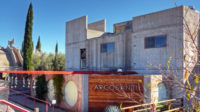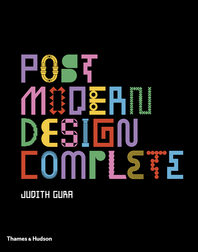Paolo Portoghesi at Center of Book Exploring Postmodern Architectural Discourse
Excerpt: 'Paolo Portoghesi: Architecture between History, Politics and Media' by Silvia Micheli and Léa-Catherine Szacka

This forthcoming book on the work of recently deceased Italian architect, theorist, and historian Paolo Portoghesi will be published in November as part of the Bloomsbury Studies in Modern Architecture series. Featuring previously unpublished archival materials and interviews, it explores the role of history, politics, and media in the making of Postmodern architectural discourse. Following is an excerpt from the introduction.
The figure of the architect is often that of a mediator. Between the client and the builder, between art and science and between the profession and theory, the architect operates at the intersection of different realities and moves across disciplinary epistemes. Yet some architects, because of their exceptional talent, play a crucial role in these acts of negotiation, wearing many hats at once and continuously shifting from one task to another. Architect, intellectual, historian, critic, designer, educator, political operator, curator, and communicator, Paolo Portoghesi has been a protagonist of Postmodern architecture who has spent his life in almost constant motion, oscillating naturally between tasks, individuals, and events.

Portoghesi’s Chiesa della Sacra Famiglia, in Salerno, Italy, featured on the book’s cover, was completed in 1974 and includes a dramatic corbeled ceiling. Photo © Roberto Conte, click to enlarge.
Often described as elegant, suave, and discreet, these very traits have also contributed to Portoghesi’s reputation as a formidable negotiator with the ability to conciliate opposites—whether between history and design, while building Casa Baldi; or media and politics, while operating in the Italian Socialist Party (PSI); between students and staff as dean of the Faculty of Architecture at the Politecnico di Milano during the year of student protests; or between East and West, while setting up the second architectural Venice Biennale dedicated to Islamic architecture. As Portoghesi himself observed, with regard to his role at the Politecnico: “It is true that I was seen as a mediating figure, partly because of my age, partly because I was an outsider, coming from a different city, but also because of my political affiliations. As a Socialist, I was in a reasonable position to mediate between the Communists, the far left, and the establishment.”
Working between two experimental lines of design research put forward by architects Aldo Rossi and Alessandro Mendini—as well as between Bruno Zevi and Manfredo Tafuri, two imposing historians who polarized the Italian architectural debate—Portoghesi played the unique role of representing the commonalities and divergences of Italian architects and scholars to find new strategies of understanding and intervention. He traveled as a means to pursue this agenda, relentlessly moving between Rome, Milan, and Venice. At the same time, his connections all over Italy enabled him to set up a strategic network of which no other Italian architect could boast.
Because of his protean nature, Portoghesi intrinsically defies any conventional analytical classification. During the 1970s and 1980s, his dynamism was uncommon, far from the stereotypical view of the architect glued to the drafting table, or the historian holed up in his studiolo examining rare documents. In this context, his unparalleled cross-disciplinary agility was looked upon with suspicion, and his flair for media was considered somewhat heretical. A polarizing figure, his initiatives and cultural directions were either praised or attacked, welcomed or rejected. He was the “Scully of the Italian Baroque,” in the eyes of American architectural historian Richard Pommer; a “master of fashions” for Tafuri; a “guru of Postmodern,” with as many visceral admirers as enemies, for journalist Oreste Pivetta; a “cultural organizer of regime architecture” at the time of the PSI, as remembered by architect and Lotus director Pierluigi Nicolin. The list of labels could easily go on, only adding to the disparate takes on his profile. Such idiosyncratic reactions can be ascribed to the complexity of Portoghesi’s shifting operative attitude, which transcended the compartmentalized organization of the discipline of architecture in Italy at that time. And yet it is precisely this polyvalence and adaptability that have distinguished Portoghesi as a unique exponent of Postmodern architecture in the second half of the 20th century. Therefore, it is Portoghesi himself as mediator who becomes the common thread throughout the pages of this book, helping to hold together all his facets, unravel the intricacies of his profile, capture his core nature, and reposition his life and work in the broader context of Postmodern architecture.



